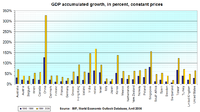
Photo from wikipedia
Abstract Examining past examples of rapid, transformational changes in energy technologies could help governments understand the factors associated with such transitions. We used an existing dataset to assess government strategies… Click to show full abstract
Abstract Examining past examples of rapid, transformational changes in energy technologies could help governments understand the factors associated with such transitions. We used an existing dataset to assess government strategies to connect new energy technologies with national narratives. Analyzing the diffusion stories told by experts, we demonstrate how governments connected the new technologies with their national narratives. The United States government supported the development of nuclear power after World War II with the national narrative that the United States was destined to improve creation, increasing the potential of raw materials exponentially for the nation’s good (“atoms for peace,” electricity “too cheap to meter”). In Brazil, the development of sugar cane ethanol was supported by the government’s invoking the national narrative of suffering leading to knowledge and redemption, coupled with the quest for improved societal well-being (technological development to produce ethanol and employment for farmers). In Sweden, biomass energy was tied to the national narrative of local control, as well as love of nature and tradition (the use of natural products). We found strong evidence that the pairing of technological transformations with national narratives facilitated the successful development and implementation of these major energy technologies in the three cases analyzed here.
Journal Title: Energy research and social science
Year Published: 2017
Link to full text (if available)
Share on Social Media: Sign Up to like & get
recommendations!